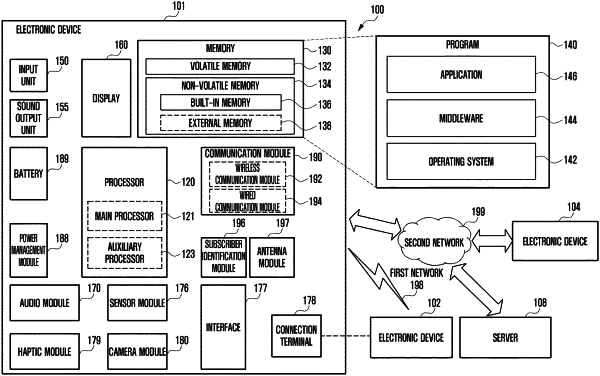| CPC G06F 1/1616 (2013.01) [G06F 3/1423 (2013.01); G06F 1/1601 (2013.01)] | 18 Claims |

|
1. An electronic device, comprising:
a foldable housing including a hinge structure, a first housing structure connected to the hinge structure, and a second housing structure connected to the hinge structure and foldable about the hinge structure onto the first housing structure;
a first display disposed on at least part of a surface of the first housing structure and on at least part of a surface of the second housing structure;
a second display disposed on at least part of an opposite surface of the first housing structure and/or the second housing structure;
at least one sensor configured to detect a change in an angle between the first housing structure and the second housing structure;
a processor operatively coupled to the first display, the second display, and the at least one sensor; and
a memory that is operatively coupled to the processor, storing instructions, and at least one application,
wherein the instructions are executable by the processor to cause the electronic device to:
display a first execution screen of an application on an activated display among the first and second displays;
while the first execution screen is displayed on the activated display among the first and second displays, pre-generate a second execution screen in response to detecting the change in the angle; and
activate, among the first and second displays, another display that has been deactivated and display the pre-generated second execution screen on the another display when the angle is greater than a predetermined threshold value.
|